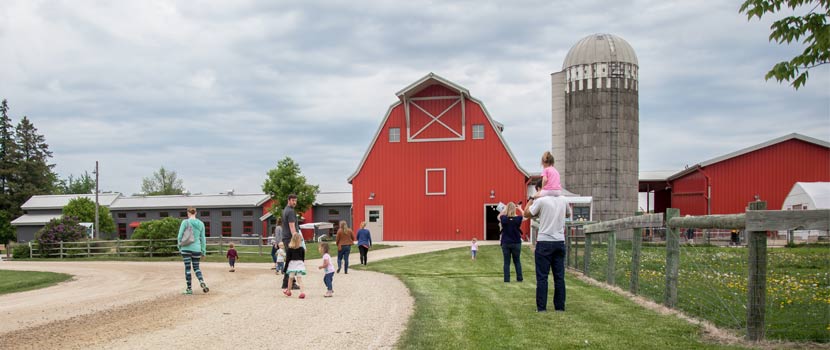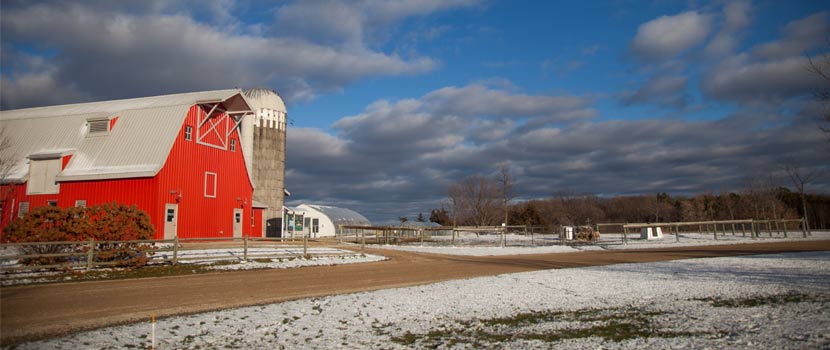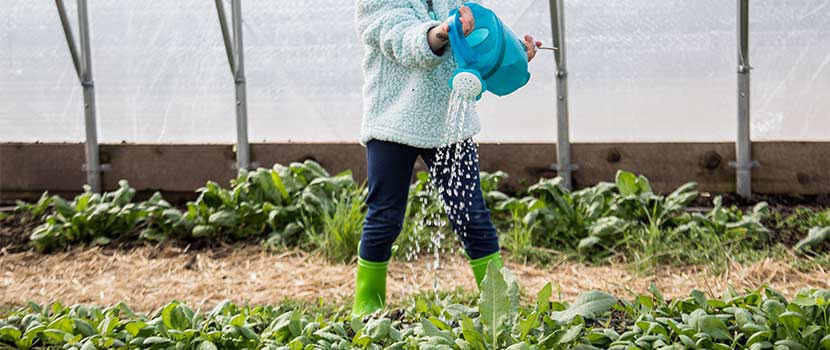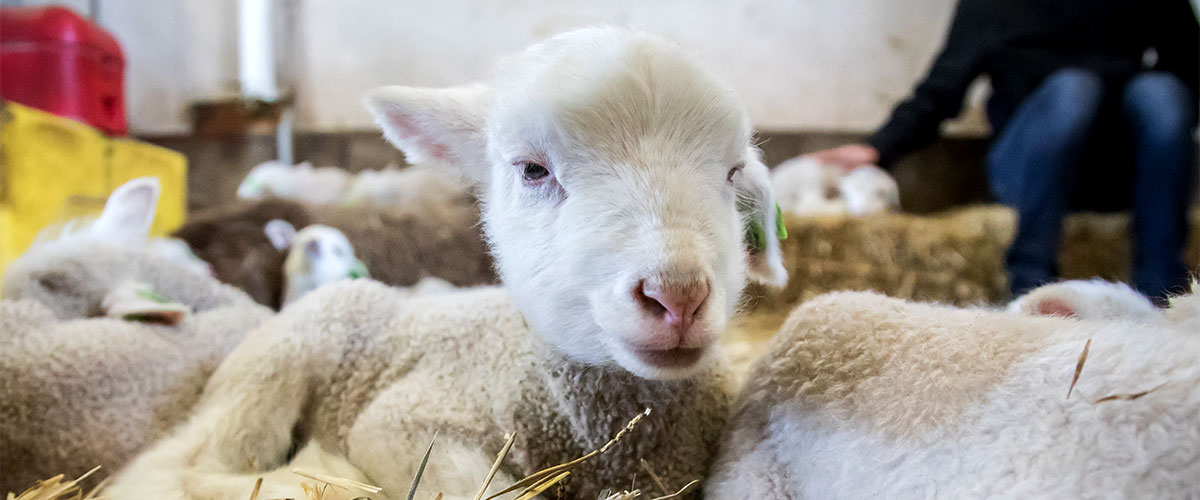
Raising Farm Babies: The Good, The Bad and The Ugly
By: Tim Reese
April 20, 2020
Category: Farm Connections
The most exciting time of the year at Gale Woods is upon us – spring babies!
Spring is always an amazing time of rebirth and renewal, especially here in the north where we transition from a dull, white, gray and brown landscape to one that is bursting with green and is full of life. Nowhere is this transition more stunning and abrupt than in the sheep section of our livestock barns.
Within a few weeks, we can transition from 20 ewes to 20 ewes and 50+ baby lambs. Some years we can have 20 or more lambs born in one night! So far in 2020, 15 ewes have given birth to 47 lambs. As of this writing, three ewes to go.
It makes for a very exciting time yet one that can be very demanding on a farmer’s time and attention.
Birthing Sheep
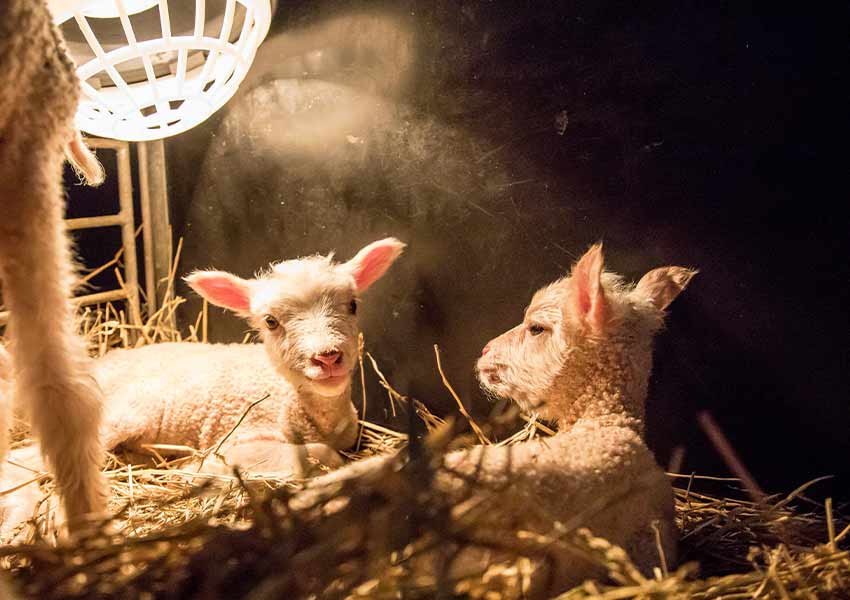
At Gale Woods, we raise Finnsheep. This is a breed that originated in Finland and is known for a high prolificacy or number of lambs born to each ewe. It is not uncommon for Finn ewes (mother sheep) to have quadruplets or even quintuplets.
We average three born lambs per ewe, but have had as many as six! This high birth rate can present some challenges during parturition or delivery:
- Sometimes the lambs get tangled up in utero and more than one enters the birth canal at once and just like a traffic jam, they can’t get through.
- Sometimes the ewe will deliver two or three lambs and attentively start licking them off and encouraging them to nurse and she will stop contracting and pushing a remaining lamb or two out.
- If the placental sac or water has broken and the lamb doesn’t get out soon, it won’t survive.
These situations are times when the shepherd must intervene and being in the right place at the right time makes all the difference. It is also why shepherds don’t get much sleep during lambing season.
Many bigger farms have installed sleeping rooms in the barns. These rooms are heated spaces with a bed or a cot and window looking out over the pregnant ewes. All the shepherd does is wake up every few hours and look through the window to see if any ewes are in labor and need assistance.
Digital cameras in the barn serve a similar purpose. The first few years we were lambing at Gale Woods, we didn’t have either and that meant trudging over to the barn every few hours to check on the ewes. Since lambing season lasts almost a month, this was a serious disruption to sleep!
At the same time, many of our visitors were hoping to see lambs being born, but it often happened at night when nobody was around. While they occasionally deliver on cue when a large group is present, I think the ewes prefer to deliver when there aren’t 100s of school children around.
So, a few of our regular volunteers asked if they could hang out in the barn to watch for ewes in labor at night. With this, the idea of Lamb Watch was born (pun intended).
Lamb Watch
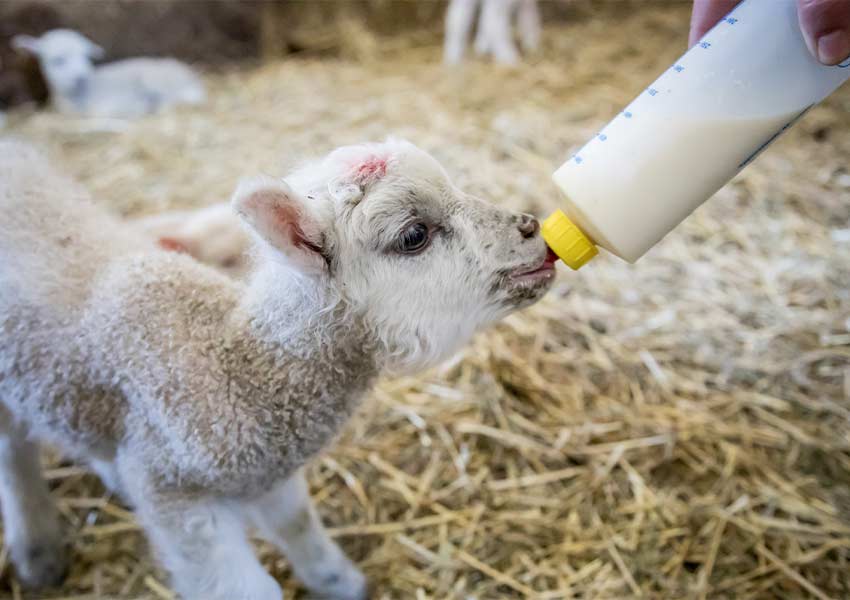
Volunteers who have qualified by putting in at least 10 hours in the preceding year attend a training in early March and learn what signs indicate that a ewe is in labor and how to know if she might need assistance.
It really should be called Ewe Watch or maybe You Watch Ewes! Many nights nothing happens, but sometimes volunteers get lucky and they might see a ewe deliver lambs.
If the ewe needs assistance, or the volunteer needs assurance that she is OK, they contact an on-call Gale Woods farmer and we are there in a matter of minutes to assist. Often it’s as simple as just placing the lamb under the ewe’s nose so she licks off the placenta and encourages the lambs to nurse.
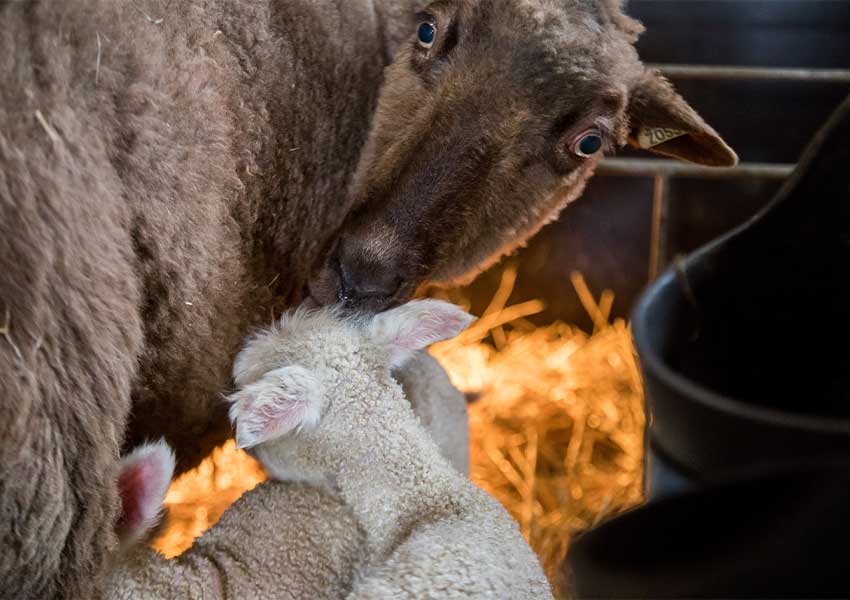
Ideally, the lambs are on their feet and eating within one hour. When our school-aged visitors realize they themselves didn’t walk until they were around a year old, they are quite impressed!
Sometimes the ewe needs help delivering a breech lamb that is coming back feet first or has its head turned back. It takes a little practice to figure out which are the front feet and to make sure that the feet being presented are from the same lamb. If one is brown and another white, it’s time to push them back in and find two legs that match!
Since Finn lambs are usually small, under six pounds, once they are heading in the right direction, it is usually pretty easy for the ewe to deliver. It’s quite impressive when a ewe delivers four healthy lambs that weigh around six pounds each and she only weighs around 130 pounds!
In 17 years of lambing at Gale Woods, the vet has only had to come a few times and only twice had to perform a cesarean section when a lamb was too big and the ewe just couldn’t deliver it on her own. In those 17 years however, we’ve never had a lambing season where a few lambs don’t make it.
Saving Premature Lambs
We can save premature lambs who aren’t able to suckle when they are born by inserting a tube into the esophagus and getting some colostrum from the mother directly into their belly. When it works, it’s amazing to see how quickly the lamb gains energy and can stand up to nurse.
Sometimes though, they are just too little and there is nothing we can do to save them. Or in spite of having nearly constant observation in the barn, a ewe might deliver lambs when no one is around to assist and it just takes too long to get the lamb through the birth canal.
With the help of our Lamb Watch volunteers, these cases are greatly minimized.
Birthing Pigs
At Gale Woods, we also have two gilts or sows farrow each spring. A gilt is a female pig that hasn’t had babies yet and a sow is an experienced mother. Farrowing is the process of a pig giving birth.
Our pigs deliver their babies in the barn in an open farrowing box. This is a wood box with little shelves on the sides and in the front that the newborn pigs can hide under after they are born.
The biggest challenge with momma pigs is weight. Momma pigs can weigh over 350 pounds, the babies weigh around two pounds, and she’ll deliver 8-15 in one litter. Even though a momma pig typically stays very still through the delivery process, which can take more than 12 hours, if she gets up to move around and lays back down to deliver more piglets, it’s a challenge not to lay down on the piglets.
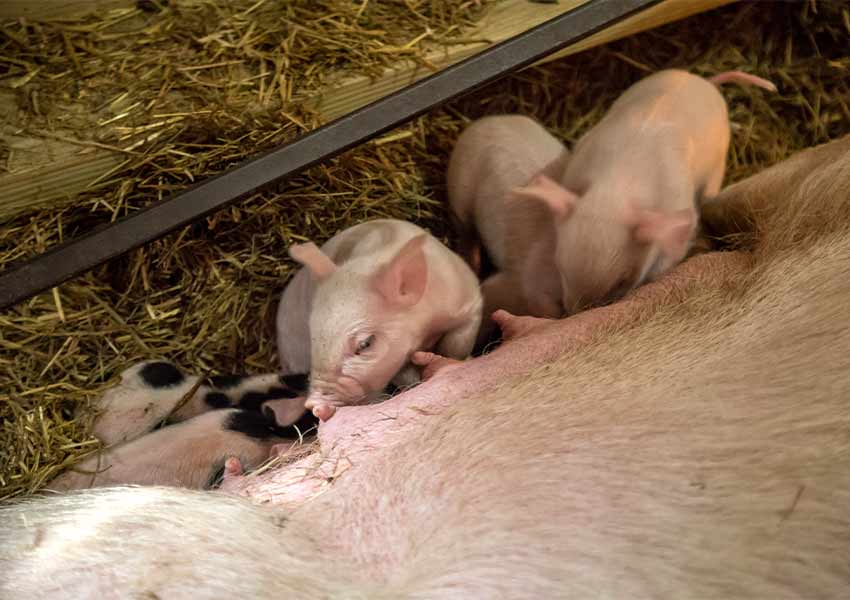
The boxes have a heat source in the front to attract the newborn babies away from their mother and under a shelf, where they are safe. It’s amazing to watch and hear the mother grunt and the piglets squeal as they communicate with each other and figure out in the first 24 hours how to navigate the nursing process so they don’t get squished.
Unlike the ewes, the sow rarely needs any help delivering the baby pigs. They are so small they typically squirt right out and find their way to nurse on their own, even though their eyes aren’t really open when they are born.
Spring Chickens
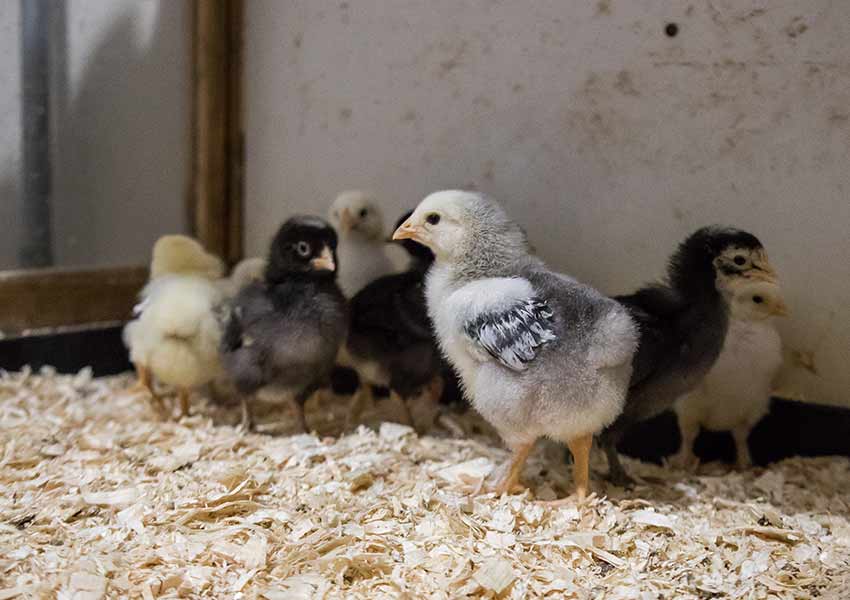
In addition to pigs and lambs, we incubate batches of eggs all spring. Chickens have a very consistent incubation period of 21 days so hatching eggs is pretty easy.
By candling the eggs, or shining a bright light through the shell, you can tell by day three or four of incubation if the egg is a fertile one that is developing. It’s pretty amazing to watch the little baby peck its way out of the shell and unfurl from its fetal position and fluff up as it dries.
With baby chicks, the most important part about assisting them is resisting the temptation to help.
Typically, when someone gets impatient and peels the chick out of the egg, it doesn’t survive. Most often they need to work themselves out slowly from the shell on their own. The most we can do is pull them out of the incubator, dip their beak in some water and electrolytes and keep them under the heat lamp.
Oh and keep the barn cats away! The cats like to set on the warm incubator on cold winter days to stay warm, but we lock them out of that room before the chicks start hatching!
Stay Connected with Gale Woods on Social
Although farm babies are not currently available for the public to see at the farm, you can keep up with the latest newborn additions at Gale Woods on Facebook and Instagram!
The park is open for hiking and viewing the animals on pasture. When the weather is nice, the lambs are out in the barnyard and you can enjoy watching their antics from outside.
About the Author

Tim Reese has been the Farm Supervisor at Gale Woods Farm since it opened in 2003. He manages the facility, livestock and gardens at this educational and production farm. While he has been known to don a scarecrow costume and sing a raucous version of Old MacDonald at Halloween events, he believes that food production and farmers have a serious and important role to play in protecting our environment and promoting land stewardship. When not busy at Gale Woods, Tim enjoys cross-country skiing, biking and exploring the natural world with his family.
Related Blog Posts
Gale Woods Farm is a unique part of Three Rivers Park District. Learn how the farm came to be and how farming and environmental stewardship go hand-in-hand.
Winter Animals at Gale Woods Farm
By: Jane Carlson
Winter is here, and while most of the critters are well-suited for the cold, some didn’t make it past Thanksgiving. Learn how the farm animals fare in colder months.
Get Ready to Garden! — A Guide for Beginners
By: Melissa Hochstetler
Have you always wanted a garden but didn't know where to start? Learn gardening basics from staff at Gale Woods Farm and feel confident in planting your own produce this season!
